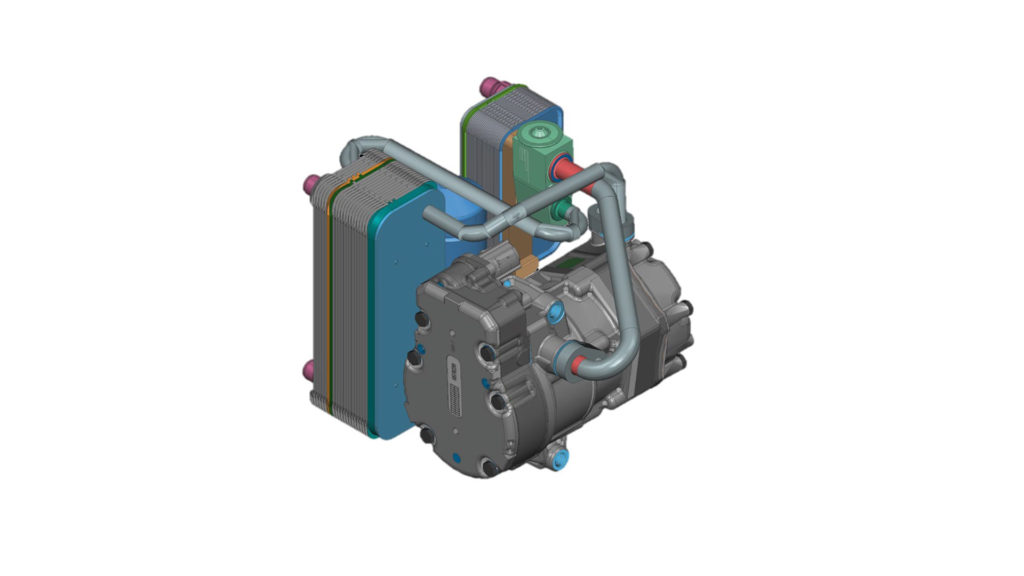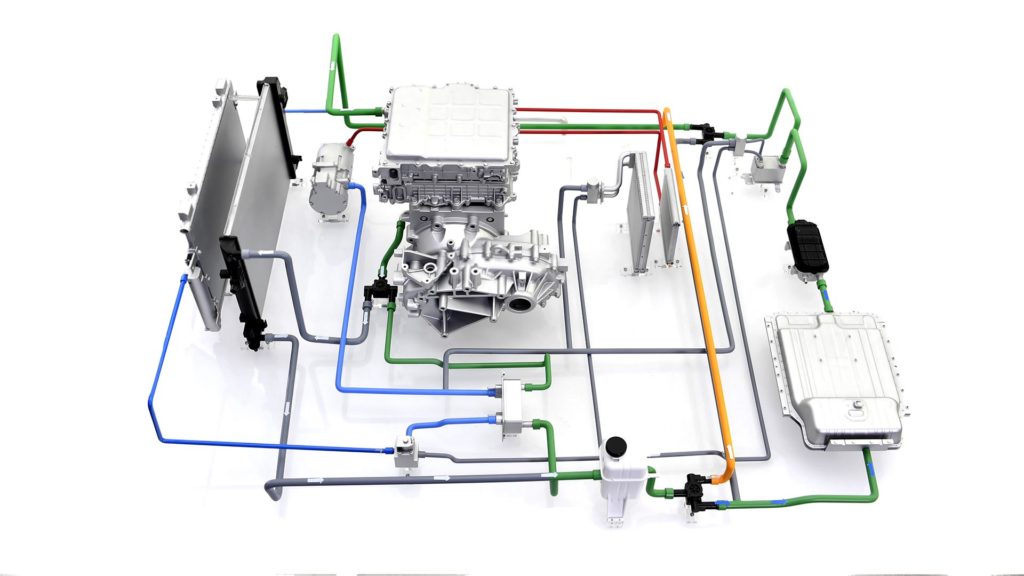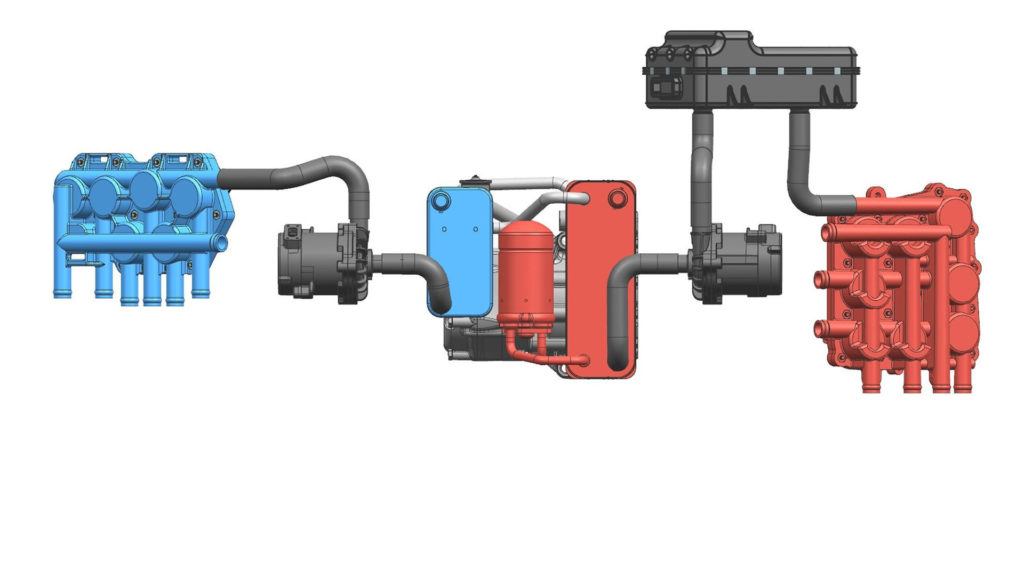Browse the online configurators for new electric cars and you might notice the availability of a heat pump, either as an option or a standard feature. But what is a heat pump and, if it costs extra, should you buy one?
Heat pumps in electric cars are nothing new. In 2013, the Nissan Leaf became the first mass-produced EV to use a heat pump to warm its cabin. The Kia Soul EV then followed suit in 2014. The technology has been developed over the subsequent years, but the principles remain the same.
What is an EV heat pump?
In simple terms, a heat pump uses waste heat from an electric car’s powertrain to efficiently warm its cabin. In other words, the pump harvests energy from the car’s drive motors, on-board chargers, inverters and battery pack.
As well as keeping the interior toasty, a heat pump can also warm the car’s battery in winter and cool it during the summer months. This helps the battery to operate more efficiently.
How does a heat pump work?
In a petrol or diesel car, the engine generates enough excess heat to warm the cabin; it’s how car heaters have traditionally worked. Because an electric motor is so efficient, there isn’t enough waste heat to warm the cabin, so an EV without a heat pump must rely on direct resistive heating to heat the traction battery and cabin.

This creates extra load on the battery pack in the winter months, reducing the range of an electric car by up to half. Similarly, the range is also shortened in the summer when additional energy is required for cooling the battery pack and cabin.
In cold weather tests, Mahle, which has built a heat pump known as an Integrated Thermal System (ITS), found an EV with conventional electric heating had a cruising range of 100 kilometres (62 miles), but this increased to 116 kilometres (70 miles) with a heat pump fitted. The German company says a heat pump will improve an EV’s range by between seven and 20 percent.
Heat pumps are like household refrigerators, but in reverse. Rather than taking heat from inside and releasing it into the room, a heat pump uses heat generated by the components listed above to vaporise refrigerant from liquid to gas form. High-pressure gas is discharged from the compressor and forced into a condenser to be converted back into a liquid. This additional heat energy is harvested by the heat pump and used to warm the car’s interior.
A heat pump doesn’t replace the car’s HVAC (heating, ventilation and air conditioning) system – climate control is the most effective way of warming and cooling a cabin – but it reduces the load on the battery and cuts energy consumption from the HVAC system.

The benefits of a heat pump
Bosch, another producer of heat pumps, says the technology can increase an EV’s range by up to 25 percent. Its system uses the vehicle’s coolant fluid to distribute warm and cool air, and says a heat pump with a rating of 1,000 watts will generate the heat equivalent of 2,000-3,000 watts.
By increasing the efficiency of the heating, ventilation and air conditioning (HVAC) system and putting less strain on the battery, the most obvious benefit of a heat pump is increased range. The knock-on effects are less time spent charging the battery and reduced running costs.
Do all electric cars have a heat pump?
Unfortunately not. Although some electric cars have a heat pump fitted as standard, the tech is still relatively expensive, so you might have to peruse the options list to find one. In many cases, a heat pump isn’t available even as an option.
In 2020, the Model Y was the first Tesla to be fitted with a heat pump, with the smaller Model 3 gaining the tech from the 2021 model year. All Porsche electric cars have a heat pump as standard, but the system isn’t the preserve of high-end EVs; the affordable Peugeot e-208 has one, too.

As typical examples, if you’re buying a Volkswagen ID.3 or Kia EV6, you’ll need to find around £1,000 extra for a heat pump.
Should you splash out on a heat pump?
There’s no doubt that heat pumps are most beneficial in cold weather, but the improved efficiency will be helpful regardless of the conditions. A 20 percent increase in range will be a boon during the winter months, especially if it means spending less time outside using a public charger.
If a heat pump is an optional extra, you need to decide if it’s worth the extra outlay. It’s likely to be a worthwhile investment if you do a lot of miles. There’s also the potential for stronger resale values as the technology matures and becomes more mainstream.
ALSO READ:
What is preconditioning and how can it boost your EV’s range?
Do you need a three-phase electricity supply to charge an EV?

